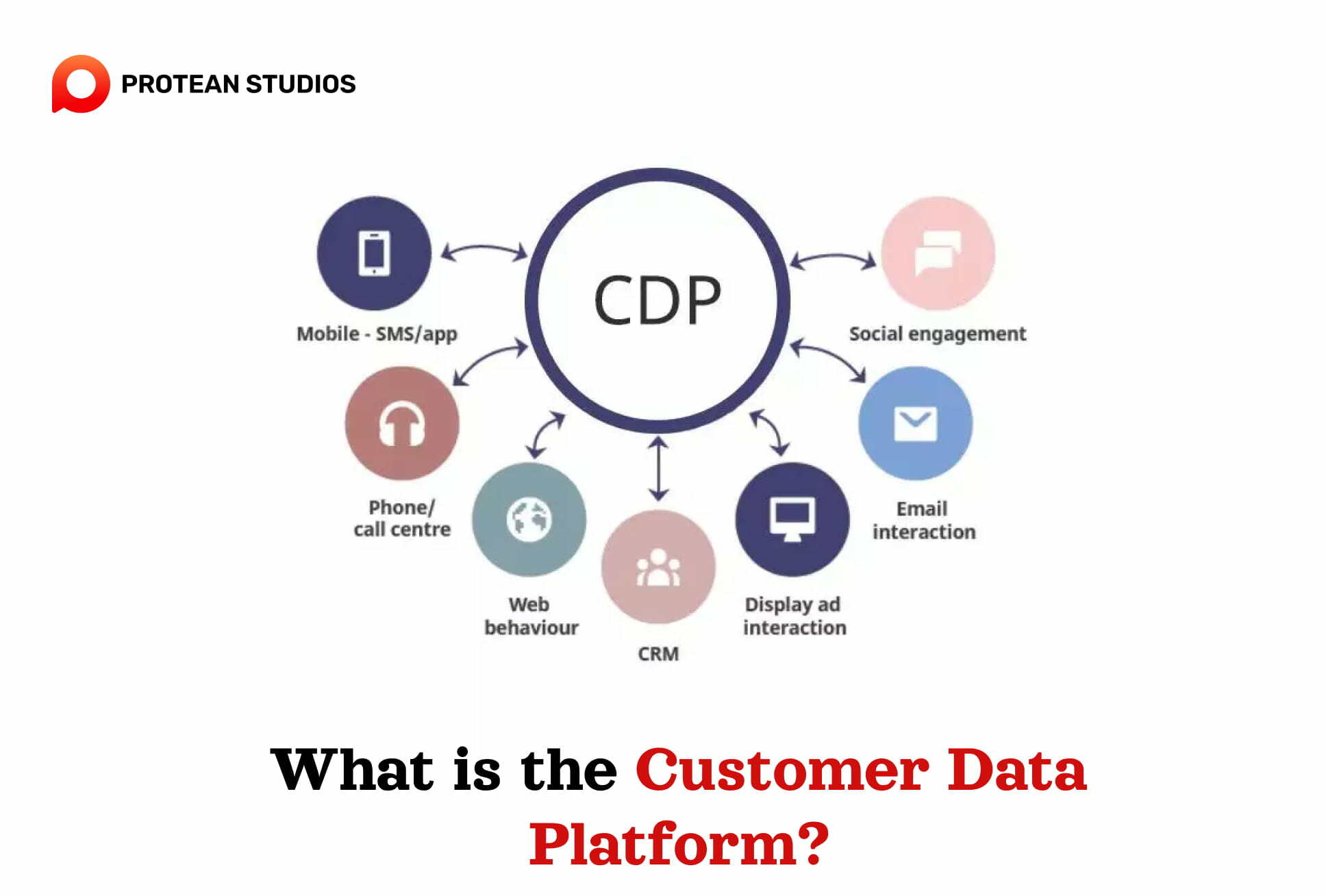In today's data-driven marketing world, understanding your customers is more crucial than ever. But with information scattered across various channels and systems, it is difficult for marketers to access their customers. In this situation, the Customer Data Platform will become a key to unlocking a unified customer view.
About customer data platforms (CDPs)
A customer data platform is a software platform that acts as a central hub for all your customer data. It collects, unifies, and cleans data from diverse sources like your website, CRM, email marketing tool, social media platforms, and even offline interactions. CDPs enable marketers to create personalized and consistent experiences across channels and devices.

Non-technical users, like marketers and business analysts, can access and act on CDPs. And then, setting them apart from other data management solutions, Thus, it can help organizations improve customer loyalty, retention, and revenue by providing a single source of truth for customer data.
Other Article: What Is Social Media Marketing
Why do businesses need to have CDP?
Nowadays, more and more businesses choose to use CDP because of its benefits, as follows:
1. Gather and handle first-party data
A customer data platform is software that helps businesses gather and handle first-party data from various sources, such as websites, apps, social media, and offline channels. By creating a unified and persistent view of each customer, a CDP enables businesses to manage their customer data more effectively and efficiently.
2. Customer data management
A CDP also allows businesses to activate their customer data for various purposes, such as personalization, segmentation, targeting, analytics, and marketing campaigns. When leveraging the insights and capabilities of a CDP, businesses can deliver more relevant and engaging experiences to their customers across different touchpoints and channels.

3. Customer data activation
A CDP is not only a tool for data collection and storage but also a strategic asset for data-driven decision-making and customer-centric growth. Thanks to a CDP, businesses can gain a competitive edge in the market and increase their customer loyalty and retention.
What does a CDP do?
To know more about the way CDPs work, you can reference some basic steps below.
1. Combining Unstructured and Structured Data
Customer data platforms make it easy for marketers to bring together different types of data—structured, unstructured, and semi-structured—to create a unified view of each customer. With a CDP, they can gather data from various sources, like email, social media, loyalty programs, and systems. For example, enterprise resource planning (ERP), customer relationship management (CRM), and data management platforms (DMPs).
CDPs not only analyze and segment customer profiles using rules or machine learning but also perform predictive scoring and help with customer journey orchestration. In simpler terms, they help businesses blend and understand diverse data sources to enhance their understanding of each customer.
2. MarTech Stack Integration
A CDP can integrate with other tools and platforms in the MarTech stack, such as marketing automation, analytics, campaign management, content management, and more. This enables marketers to leverage customer data across different channels and touchpoints. Thus, they will optimize the performance and ROI of their marketing activities.
3. Data Democratization
A CDP also facilitates data democratization, which means that customer data is accessible and usable by anyone in the organization who needs it, not IT or data specialists. This empowers marketers to make data-driven decisions and to act on the insights derived from customer data.

4. Implementing Marketing Personalization and Activation
A customer data platform shares customer data with other systems to kickstart campaigns. Then, enhance the customer experience throughout their marketing strategy across various channels.
CDPs empower marketers to use advanced personalization to pinpoint and group important target audiences. This offers fitting product and content suggestions and sets up retargeting programs. In short, CDPs help marketers improve how they connect with customers by using their data to create more personalized and effective campaigns.
Read more: Exploring Data-Driven Marketing
Guidelines for choosing the right CDP
In the dynamic landscape of marketing technology, selecting the right customer data platform is crucial for optimizing your business strategies. Here are some fundamental guidelines to assist you in making a well-informed decision:
Data Integration: Ensure the CDP integrates with various data sources, including CRM, ERP, social media, and more. After that, verify its ability to handle diverse data types—structured, unstructured, and semi-structured.
Scalability: Choose a CDP that can grow with your business. Consider the scalability of the data volume and the number of users.
User-Friendly Interface: Opt for a CDP with an intuitive interface that enables non-technical users, such as marketers and analysts, to access and use the platform.
Data Security and Compliance: Focus on a CDP that adheres to data security standards and compliance, ensuring the protection of customer information.
Real-Time Processing: Look for a CDP that provides real-time data processing capabilities. This is crucial for staying responsive to customer behavior and market trends.
--------------------------------------------------
If you need help finding the best CDP for your business, contact Protean Studios, a reliable marketing technology outsourcing company. We are a leading provider of AI-powered solutions that help businesses deliver personalized and profitable customer experiences.
We can help you select, install, and optimize a CDP that suits your needs and goals. Don't miss this opportunity to transform your customer data into actionable insights and revenue growth. Contact PROS today and get started with a free consultation.




